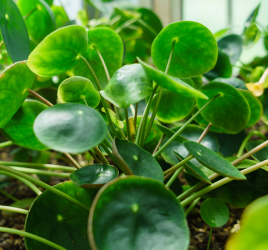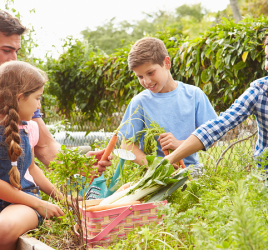9 Autumn Tips on How to Winterize Your Garden

If you are an avid gardener, you might be trying to find great ways to prepare your garden for the winter. Using the resources from your own garden will prove to be your greatest asset. Leaves, dead plants, and compost are all you need to help enrich your soil for the upcoming spring. Here are 9 great tips for preparing your garden in the autumn for the winter.
How to Winterize Your Garden
- Clean Out the Garden of All Dead Plants
As your garden begins to die in the fall, you can take the dead annuals, and perhaps some of the other plants and vegetables that have already died and place them in your compost. The reason is that the insects that feed on your summer plants will lay eggs and then they will hatch in the following springtime. Your tomatoes and your peppers might still be growing and leave you with a few more crops, so leaving those will be fine. When the first frost hits it is a good idea to clean out all the crops to prevent disease. The dead plants and weeds that you do clean from you garden will be great additions to your compost pile. - Enrich Your Composting Pile
There are many different ways to compost. Most people tend to go with a two parts brown and one part green. What that means is that all your dead plants from your garden, including dried leaves and pine needles can all be used for your brown. If you live in an area where they make you play for each bag of waste, remember that leaves make great additions to compost piles and can save you some money. The parts that are green will be all of your kitchen scrapes. To gain more information on composting, please visit our post at Composting Strategies for the Busy Gardener. - Continue with a Fall/Winter Garden
As the temperatures begin to drop, you might be thinking that is the end to your garden. However, there are many vegetables that do great in cooler weather. Once you have cleaned out your summer crops, it can make room for late fall and winter ones. Vegetables like kale, collard greens, lettuce, even sweet peas and carrots can survive some cooler temperatures. This is also the perfect time to plant garlic, shallots, and rhubarb for a spring crop. To find out more information about what plants survive well in cooler temperatures visit our article at, 12 Top Vegetables to Grow in the Fall. - Plant a Cover Crop
Planting a cover crop will help to protect your garden from erosion, enrich the soil, and help hold the soil in place. According to Mother Earth News:“The granddaddy of all cover crops is a mixture of buckwheat, red clover and turnips. The buckwheat feeds the bees, holds the soil in place, suppresses weed growth and breaks down readily after a frost. The red clover enriches the soil, suppresses weeds and also helps to hold the soil. And the turnips? After the buckwheat dies, you can protect them with a bit of straw and have turnips to eat throughout the winter!”
Having a cover crop can prove to be a great addition to your garden to help enrich the soil and continue to make it apart of your life, even into the winter.
- Tidy Up Garden Beds
This is a great time to tidy up some of your perennials while the soil is still warm. An example of this would be to start dividing your hostas, and cutting back your raspberry canes. Once your garden is cleaned up, add a layer of compost over the bed. Don’t worry about mixing the compost in as the worms can take care of that for you. - Plant Evergreens
Looking for a way to add some green to a winter landscape? Look no further than the evergreen. Autumn is the perfect time to plant an evergreen as the soil is still warm, but the weather is cooling down. Find areas in your yard landscape that needs some filling. - Net Your Pond
If you have a backyard garden pond, you will want to get a net for your pond as the fall leaves come down. You might notice that the decomposing leaves will leave a foul smell in your pond and can also back up the filter in your pump. The best way to avoid that is by adding a cover. This is a simple and easy way to protect your pond. The leaves that you collect can be added to your compost. - Create a Leaf Mold
Looking for a place to put all of your leaves that fall? The town we live in can cost from $1.50 – $2.50 a bag of leaves in the fall. Our yard has had over 30 bagged leaves in a fall. To save money and time, we created a leaf mold. A leaf mold is a sheltered spot to collect your leaves in. You can use plastic bin liners too with holes punched though the sides if you are limited on space. Once your leaf bins are filled up make sure you dampen them with water and then leave them to sit for about two years. Make sure to dampen them with water every now and then to make sure that they leaves are decomposing. The goal is to get the leaves to reach a crumbly texture and then they will be able to spread as mulch. - Lazy Mulching
If you are feeling a little lazy, you can rack up your leaves and then wait about a month and then spread them on your garden as a covering for the winter. You can toil the leaves into your soil adding a lot of nutrients.
Take Away
When it comes to preparing for the winter, giving some extra time to tidy up and to prepare your soil will go a long way. Working in your yard doesn’t always have to be a tedious tasks, but one that you can enjoy and take pride in. When you go the extra effort to prepare your garden for the winter, you won’t be disappointed.
What is one way you plan to prepare your garden for the winter? We would love to hear your thoughts.



